Kites are fascinating objects in various shapes, sizes, and colours. There are many different types of kites, each with unique features that suit various weather conditions. For example, delta kites are great for flying in light winds, while diamond kites are ideal for windy days. Whatever your interest or experience level, there is a kite out there that will suit your leisure needs.
Types Of Kites: Their Features & Basic Designs
A kite’s shape is determined by its spars’ arrangement, which are the structural elements that hold the kite’s shape. How large or small the kite will be is determined by the length of its spars and the area of its sail.
The spars of a kite can be made from various materials, including bamboo and carbon. Bamboo spars are lightweight and flexible, making them ideal for smaller kites, whereas carbon spars are stronger and stiffer, making them suitable for larger kites that require more support.
The shape of a kite can also affect its flight characteristics. For example, a triangular shape makes a kite more stable and easy to fly, while a diamond shape is more challenging to fly but more maneuverable in the air.
Types Of Flying Kites
Some popular types of kites include diamond kites, delta kites, box kites, parafoil kites, and stunt kites. Each type has specific design and flying capabilities, making them suitable for different conditions and purposes.
Delta Kite
The delta is one of the most popular leisure activity kite types. With a simple design, a triangular sail and a lightweight frame made of fibreglass, carbon fibre, or wood, they are easy and inexpensive to construct, making them a good choice for beginners.
Delta kites are versatile fliers flown with one to four lines. They have good wind range and can fly in light to moderate breezes. A key advantage of delta kites is their triangular shape, which resists spinning and stalling, and they have excellent stability and ease of handling due to the three-point bridle system, allowing for a wide wind range and smooth flying.
With proper tuning, delta kites are easy to control and maneuver as their triangular shape gives them an excellent lift-to-drag ratio, allowing them to fly at high angles. Their simplicity, performance, and affordability make them perfect for new and experienced kite fliers.
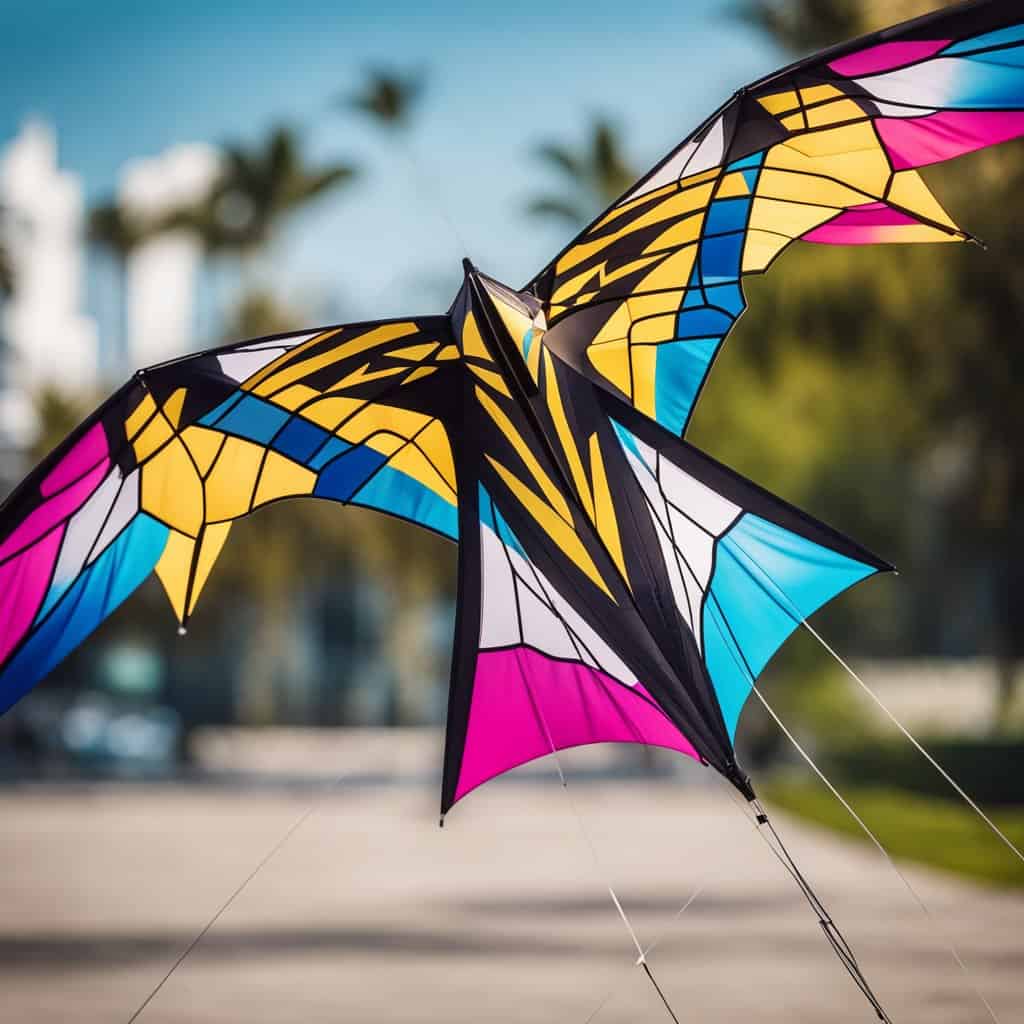
Diamond Kites
The classic diamond kite has the iconic, recognizable shape of a diamond, which has been flown for centuries and remains popular. Diamond kites typically have a wooden or fibreglass frame that creates a distinctive diamond outline. The sail is made from ripstop nylon or polyester fabric, and a single flying line attaches to a bridle point at the center of the kite.
Diamond kites are known for being stable and easy to fly. Their four-point bridle allows for a wide wind range, provides good lift and can fly at steep angles. The tail helps keep the kite oriented correctly to the wind. Diamonds come in various sizes, but even large sizes remain graceful fliers.
Their forgiving flight characteristics make them an excellent choice for beginner fliers. With basic tuning, diamond kites are easy to control and maneuver. More advanced fliers can enjoy tailoring the bridle to optimize the kite’s wind range and performance.
Diamond kites are also fun to decorate creatively. Their sails make an excellent canvas for colourful designs, patterns, and decorations. Custom details can make each kite a personalized work of art.
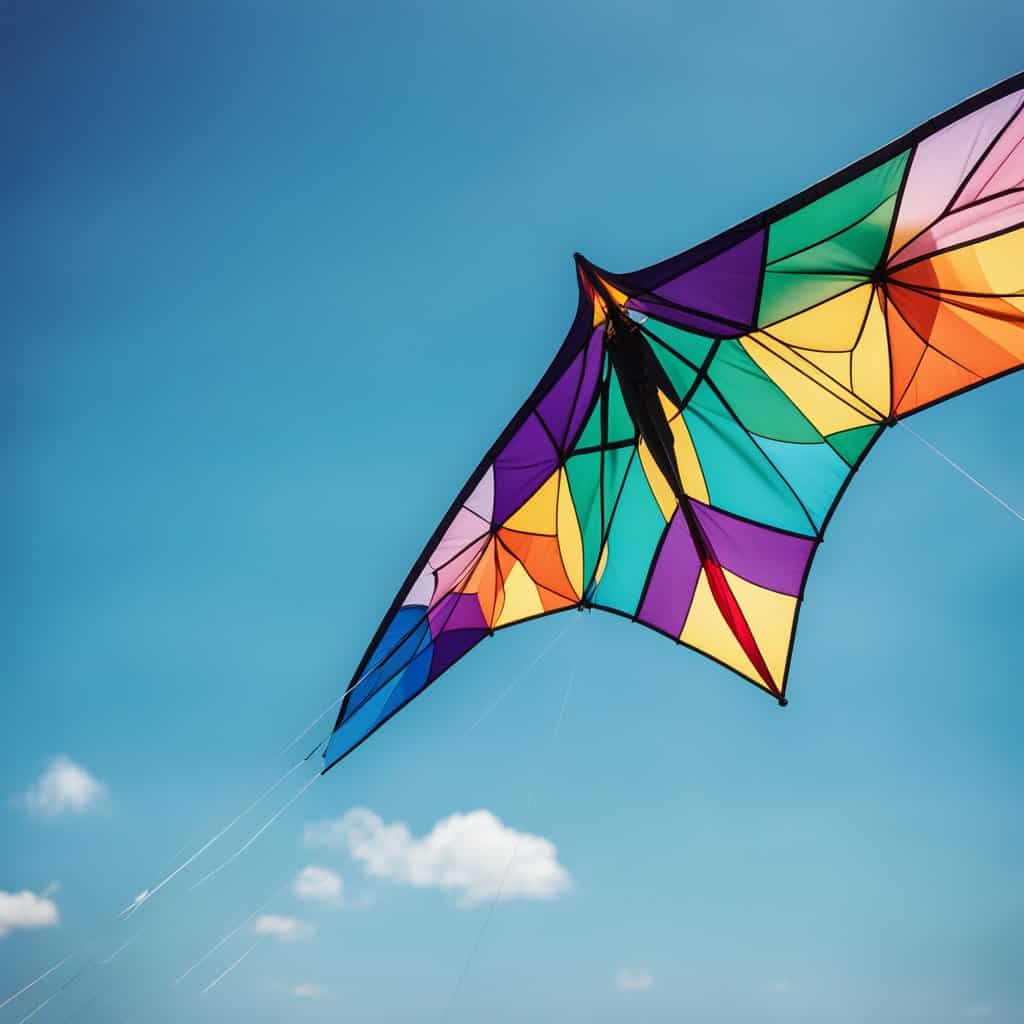
Cellular Kites AKA Box Kite
Cellular kites, or box kites, are a category of kites with a three-dimensional, multi-celled design. This distinguishing shape allows cellular kites to capture more wind and generate greater lift than flat, single-panelled kites.
The prototypical cellular kite is the box kite with four sides that form a box-like shape. Each side acts as a small sail to provide additional lift. Cellular kites may have stacked rectangular cells, tetrahedral cells, or a combination of shapes. Popular varieties include Hargrave, Malay, and Double Box kites.
Building a cellular kite requires spars on multiple sides to maintain the overall shape. The complex structure makes them more challenging to construct compared to single-panelled kites. Cellular kites are not designed for stunts but are stable fliers.
The multi-cell configuration gives cellular kites a unique aesthetic in the sky. Their ability to achieve greater altitude makes them well-suited for lifting cameras for aerial photography. Cellular kites appeal to expert kite builders and engineers who appreciate their sophisticated structural design.
While not as common today, cellular box kites were instrumental in the early development of aviation. The extra lift of their stacked cells paved the way for modern airplane wings and kite applications.
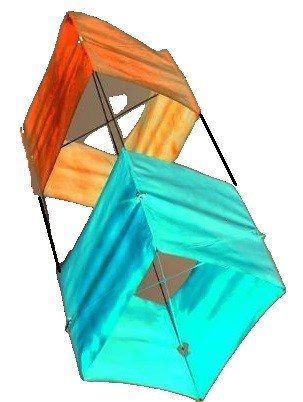
Sled Kites
The sled kite is one of the most straightforward and recognizable designs. This classic kite gets its name from its resemblance to a sled or runner sled. It has a basic rectangular shape with an angled upright spine and horizontal cross spar.
Sled kites are easy and inexpensive to construct using wooden dowels or fibreglass spars and a lightweight plastic or ripstop nylon sail. Their simple structure makes them a popular choice for beginner kite makers. The angled spine gives the sled kite good stability and helps it fly steadily.
A significant advantage of the sled kite is its great wind range. The bridle point can be adjusted for optimal flying in light to strong winds, so they generally fly well in various conditions. Their ability to float high makes them excellent for lifting tails or flying banners.
While sled kites are not designed for elaborate tricks, they can be maneuvered for basic spins and dives.
Their forgiving flight characteristics make them suitable for kids learning to fly a kite. Sled kites are also easy to modify and decorate for added customization.
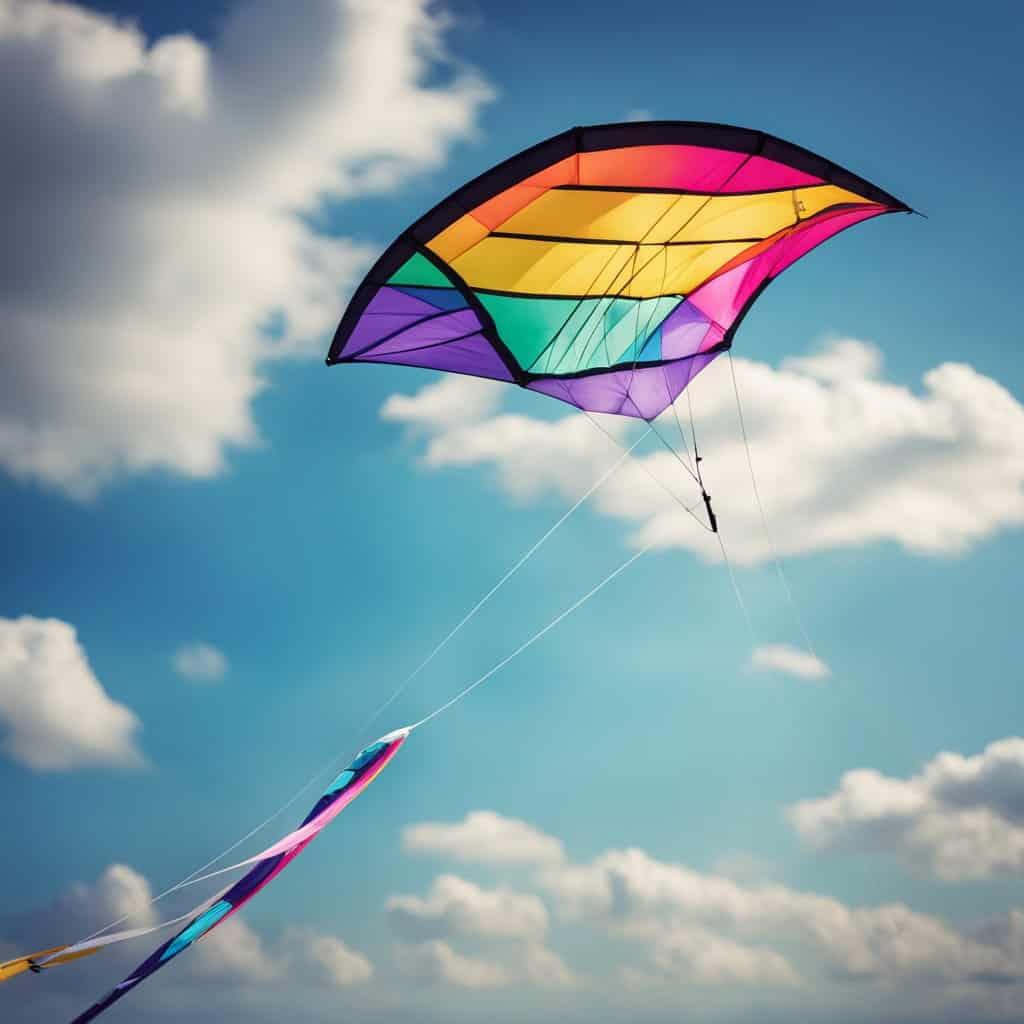
Rokkaku Kites
The Rokkaku kite is a traditional Japanese fighter kite dating back to the 17th century. It gets its name from its hexagonal shape, as “rokkaku” means “six corners” in Japanese.
Rokkaku kites are typically made with a bamboo frame and washi paper sail. Their lightweight construction and large sail area of around 2.5 sq meters give them excellent maneuverability. The large sail lets Rokkaku kites fly efficiently in light winds. Traditionally, they were painted with Japanese symbols, kanji, or facial expressions.
Rokkaku kites can be flown with one or two control lines. Their six-sided shape provides stability, and their responsive handling makes them fun for stunting and fighting. They are also used for kite aerial photography. Rokkaku kites appeal to fliers looking for a kite that combines tradition and fun.
In kite-fighting competitions, rokkaku kites are used to try to cut the string of opposing kites. The Rokkaku remains one of Japan’s most culturally iconic kite designs. Its balance of simplicity, agility, and decorative flair has solidified its enduring popularity after centuries of Japanese kite flying history.

Stunt Kites AKA Sport Kites
Stunt kites, also known as sport kites, are designed for performing aerial tricks and maneuvers. They are controlled via two or four lines, allowing the pilot to steer and precisely manipulate the kite.
Stunt kites typically have a lightweight, aerodynamic frame of fibreglass, carbon or graphite. The sail is made of ripstop polyester or nylon fabric. Lines are attached to the bridle, control bar or handles to allow steering by the pilot.
Advanced stunt kites are highly agile and can be guided through complex patterns. Skilled pilots can execute sharp turns, loops, dives, and other dynamic stunts. Quad-line stunt kites allow for even greater control and precision. The four lines will enable the pilot to manipulate the kite’s pitch and rotation independently for advanced flying. Delta, parafoil and framed quad-line kites are common in professional kite routines.
Competitions involve performing choreographed routines or demonstrations of technical skills. Stunt kites are flown in windy conditions, usually over land, due to their speed and responsiveness, which make them challenging to master but exhilarating to fly once skills are developed.

Roller Kites
Roller kites have a distinct rolling motion that provides a unique flying experience. They got their name from how the kite “rolls” around the spine or leading edge as it flies.
The typical design is a delta or diamond shape with two sticks forming the vertical spine. One or more horizontal sticks act as spreaders. The sail is loosely attached to allow it to roll around the spine when airborne.
Roller kites fly without a tail at a steep angle. The loose sail rolls and spins around the spine, stabilizing the kite and giving it an erratic, dancing flight pattern. This mesmerizing motion makes them visually appealing.
The erratic motions of roller kites make them challenging to fly. But once airborne, they have a captivating fluid movement that adds an artistic flair to any sky. Their unique rolling, dancing flight gives roller kites their style.
Early roller kites like the Roloplan were popular in Europe in the early 1900s. Modern flier designs like Alick Pearson improved performance while retaining the signature rolling flight.
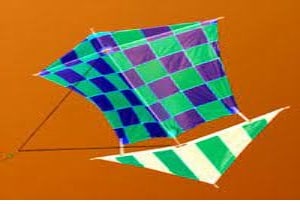
Fighter Kites
In Asia, kite fighting is a popular tradition, and fighter kites are the tools of the trade. These kites are designed for aerial battles and competitions, and countries like India, Pakistan, Afghanistan, and Thailand have a strong tradition of flying them.
The most common fighter kite shape is the flat, diamond-shaped kite with a single flying line. Fighter kites are lightweight and highly maneuverable. The lines of the kite are coated with crushed glass or other abrasives.
In kite fighting contests, known as kite battles, opponents use their sharp kite lines to cut through the line of opposing kites and force them to fall to the ground. Expert maneuvers and line control are needed to “fight” other kites in the air.
Fighter kite flying requires great skill. Pilots must be able to launch, land, and control their fighting kite to cut through other lines. Competitions often involve individual battles and team battles between groups of kite fighters.
From crowded city neighbourhoods to open fields, fighter kites bring fierce fun and competition to the skies. The cutting and battling between opponents combine kite flying with strategic aerial combat. The agile movements and face-offs between fighter kite pilots create an exciting spectacle for viewers on the ground.

Miniature Kites
Many traditional kite-making cultures have created miniature kites for centuries. China, Japan, India, Korea, and Indonesia all have a history of tiny, detailed kites made with paper, bamboo, and silk. Miniature kites are small enough to fit in the palm of your hand, usually under 12 inches in wingspan.
Modern miniature kites are made from lightweight paper, plastics, or fabric. Their small size and delicate nature require precision and skill to construct. Designs include miniature versions of larger kite types, and despite their tiny size, miniature kites can fly just as well as their full-scale counterparts when made correctly.
Flying miniature kites provides a unique experience. Their diminutive size gives them a delicate, graceful flight. Watching a tiny kite dancing on the breeze can be mesmerizing.

Traction AKA Power Kites
Traction or Power kites are a type of kite used in various kiting sports such as kiteboarding, snow kiting, and landboarding. These kites provide significant pulling power, allowing the user to be pulled along by the wind or to perform aerial maneuvers. Traction kites can be made of various materials, such as ripstop nylon, and come in different sizes and shapes to suit different wind conditions and user preferences. With the proper training, equipment and skills, traction kites can provide kite enthusiasts with an exciting and thrilling experience.

Final Thoughts
Flying kites is a popular outdoor leisure activity enjoyed by people of all ages. Some kites are for stunts or performing tricks in the air, while others are for leisure, like diamond, box, and delta kites. Regardless of the type of kite, flying a kite is a fun and relaxing leisure activity that can be enjoyed alone or with friends and family.
Frequently Asked Questions
What makes a box kite different from other types of kites?
Box kites are unique because of their box-shaped design. Box kites can also be designed to have multiple cells, which can increase their lift and stability.
What are the benefits of flying a flat kite?
Flat kites, also known as single-line kites, are great for beginners because they are easy to fly and control. They are also very portable and can be taken anywhere.
What are the primary uses of foil kites?
Foil kites are used primarily for power kiting activities such as kiteboarding and landboarding. They are designed to generate lift and pull to propel a rider across the water or land.






